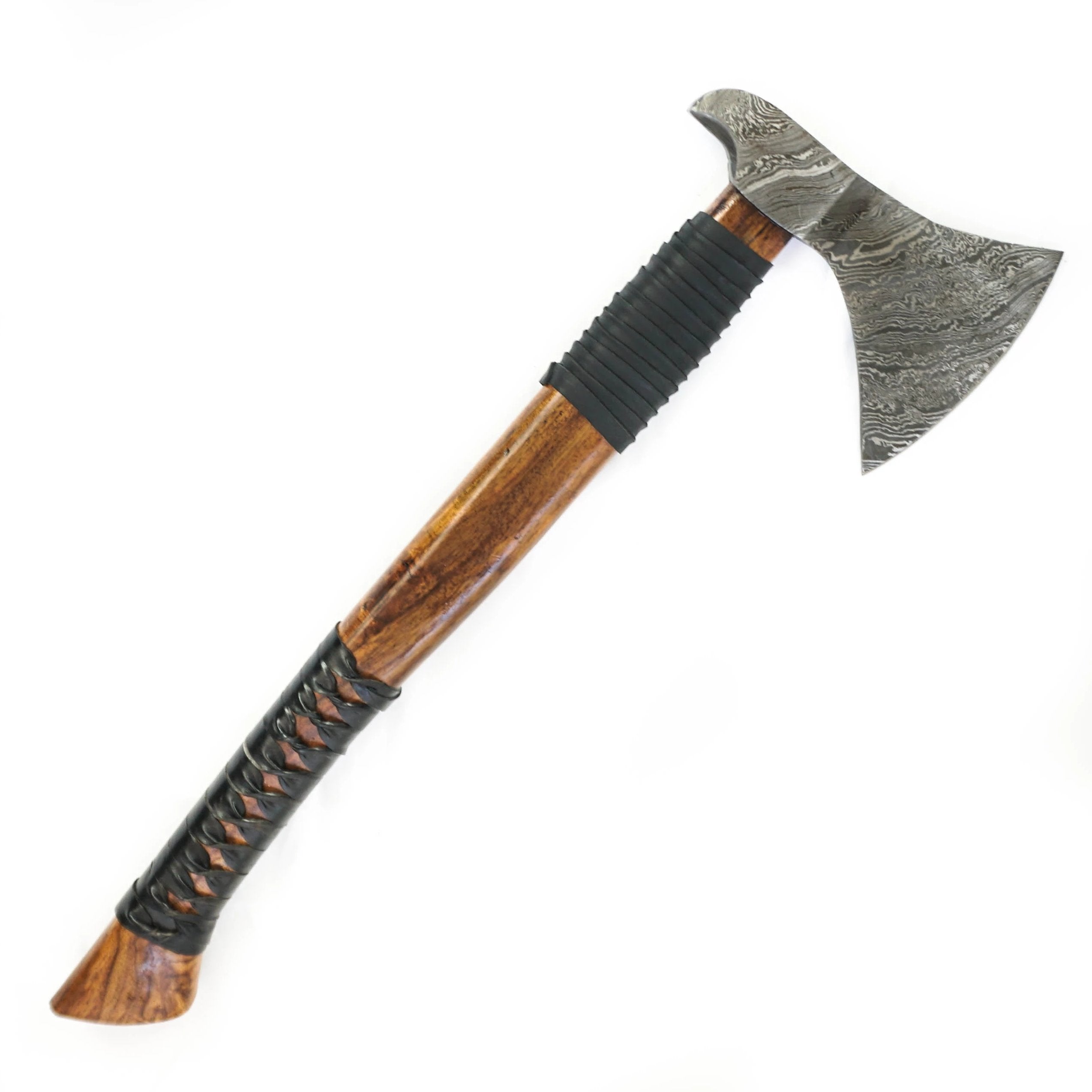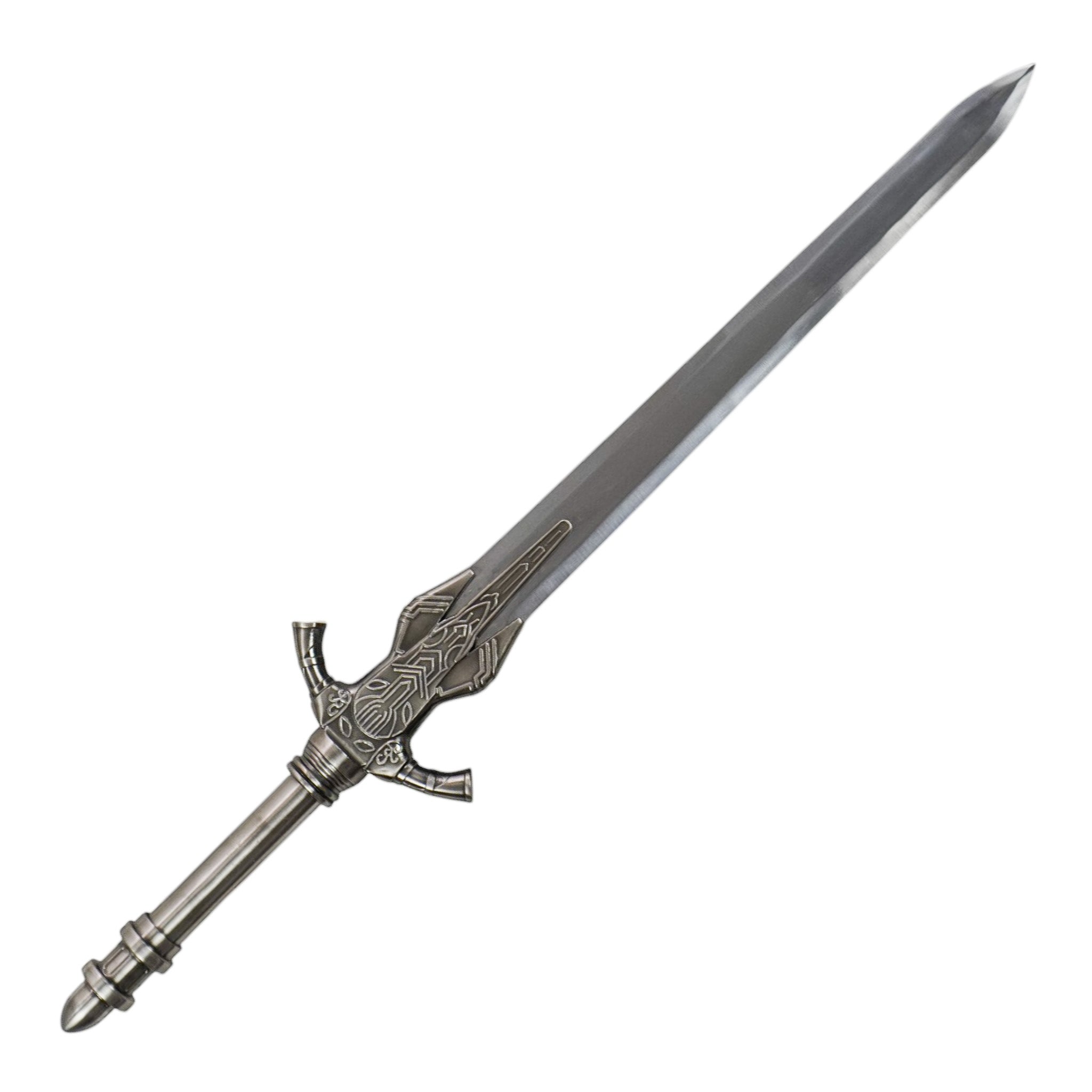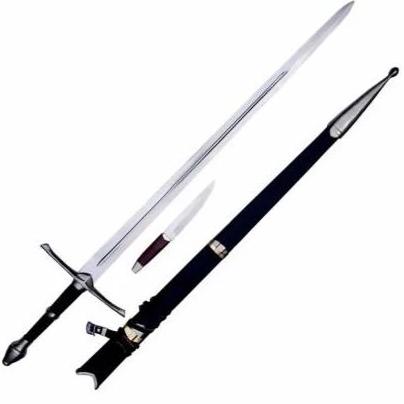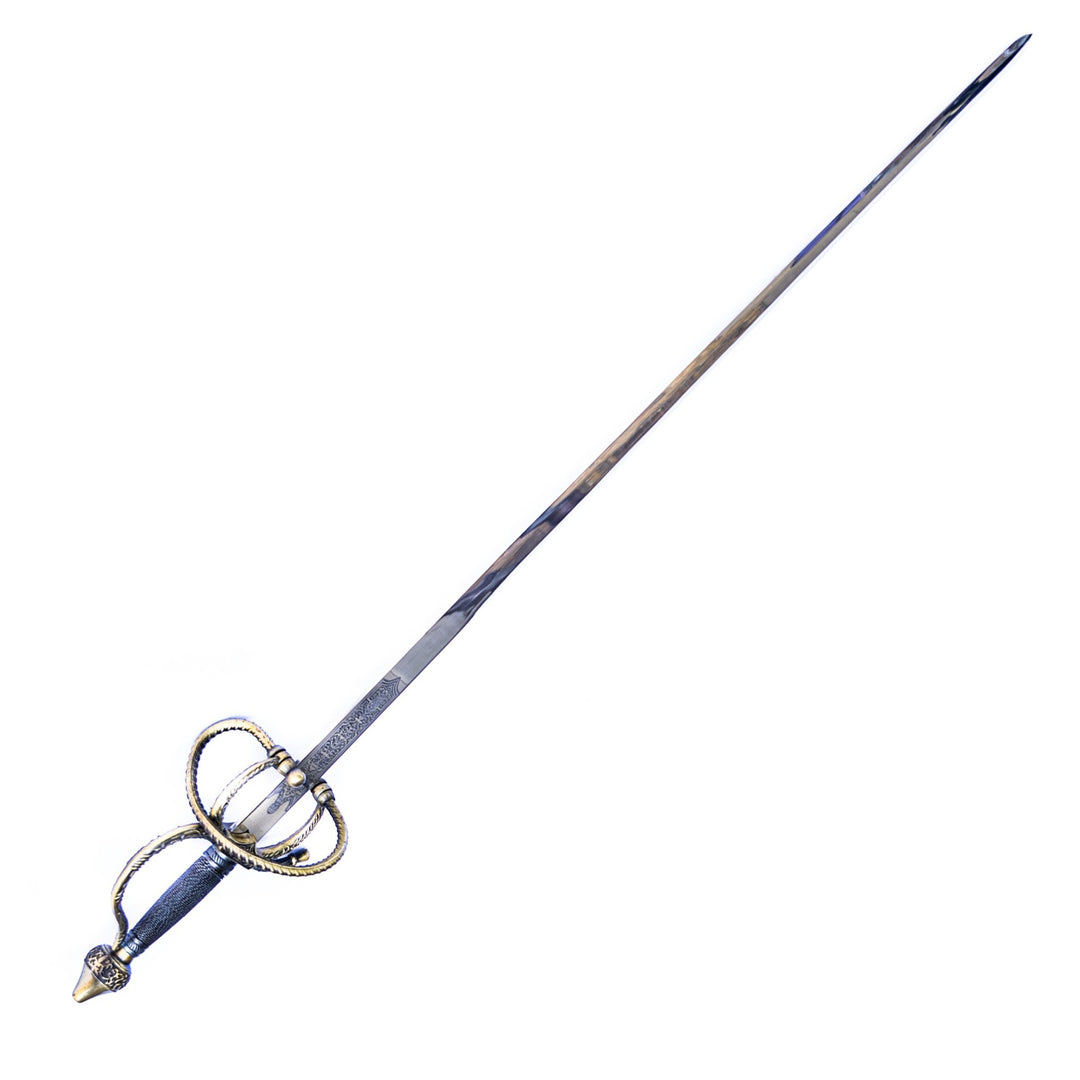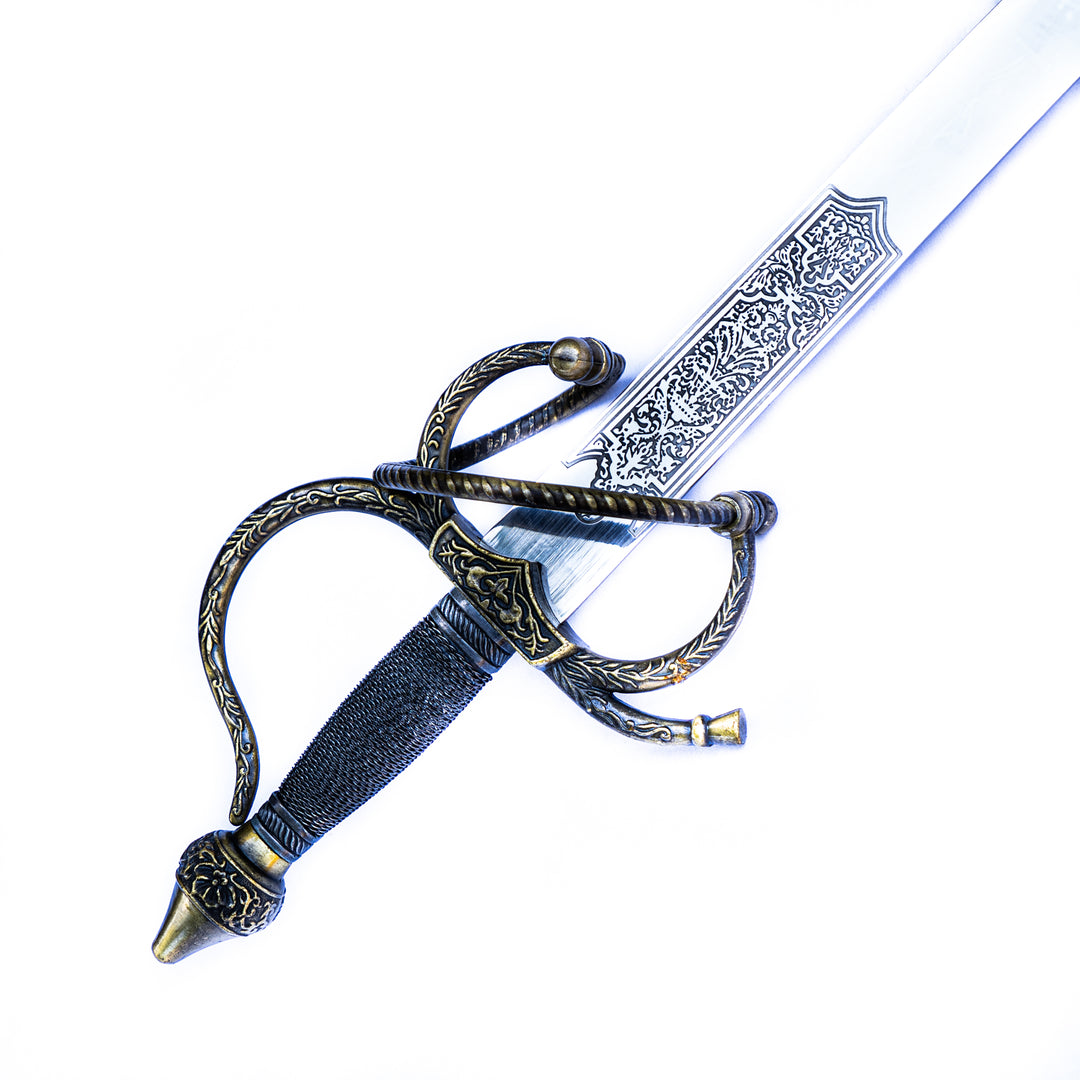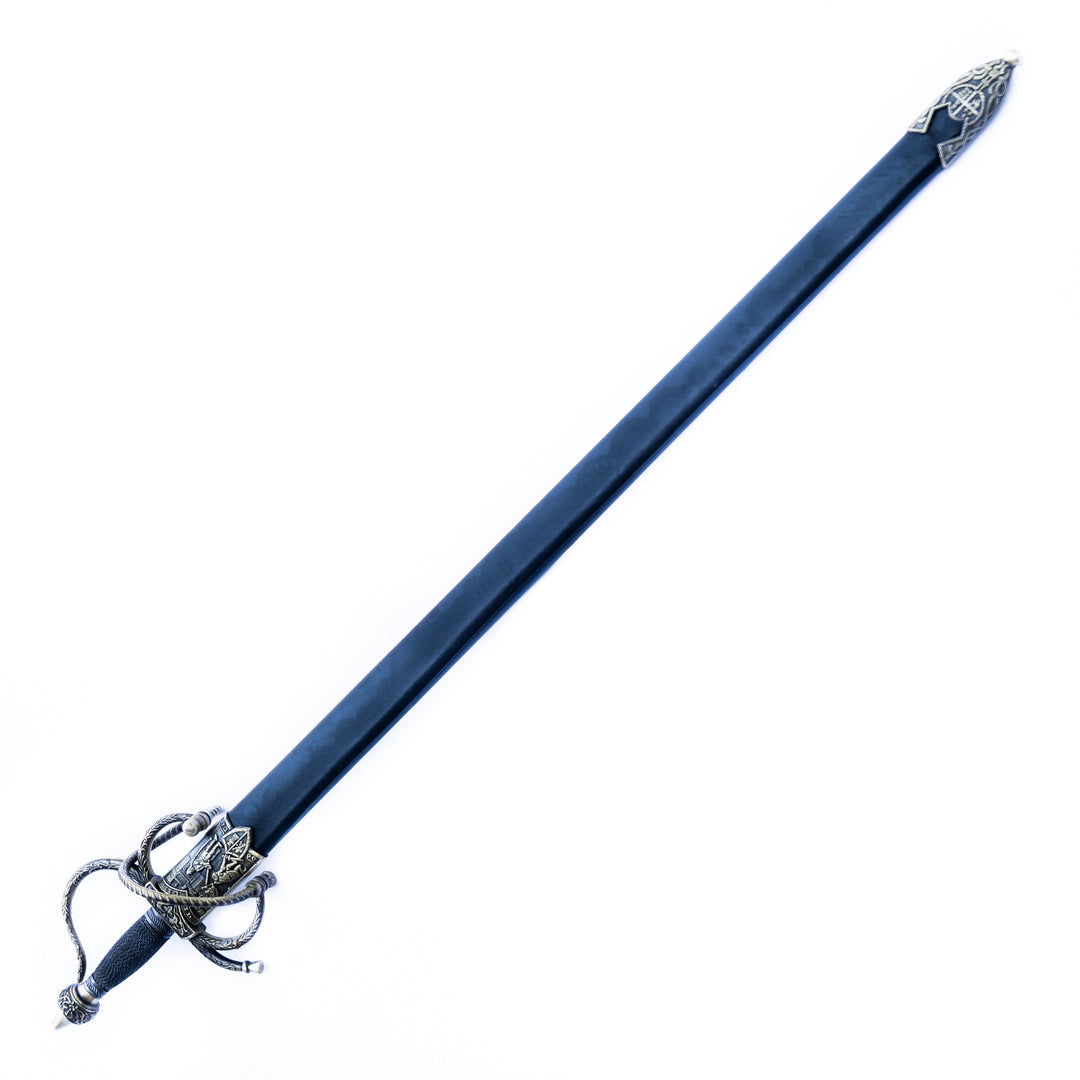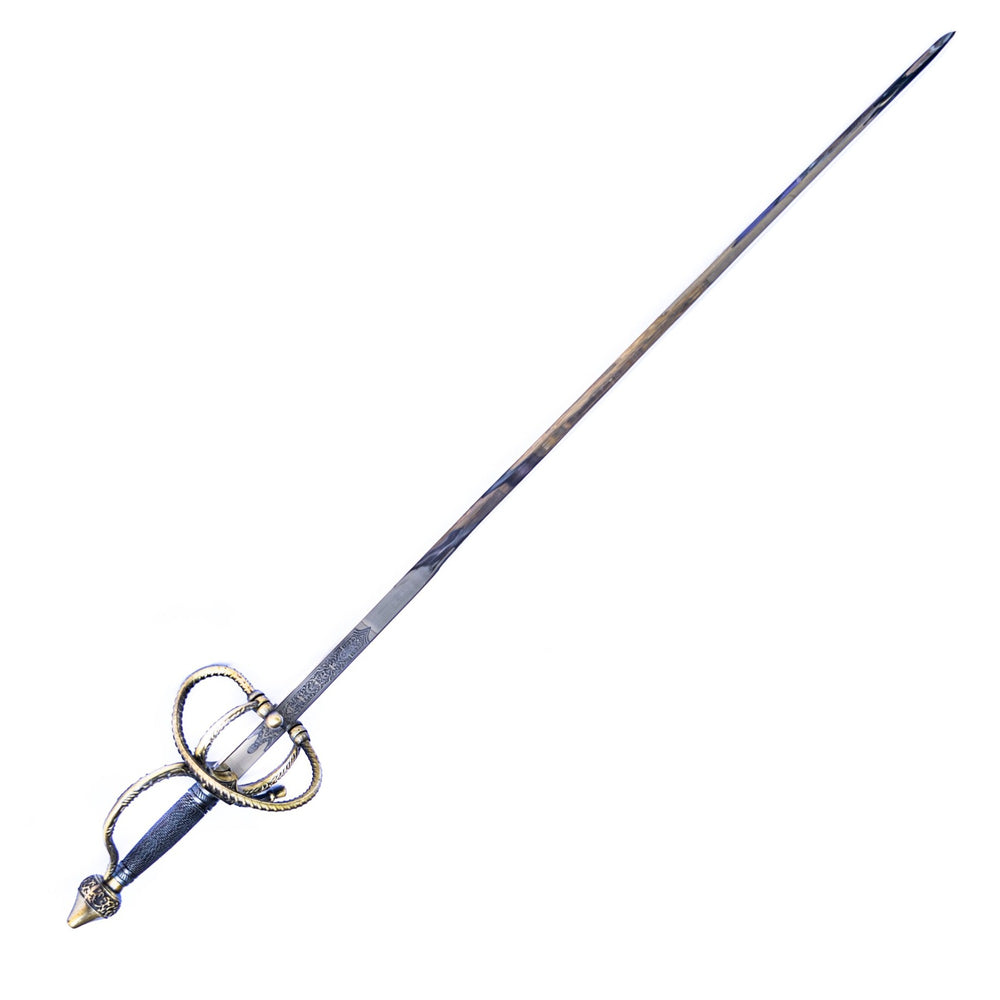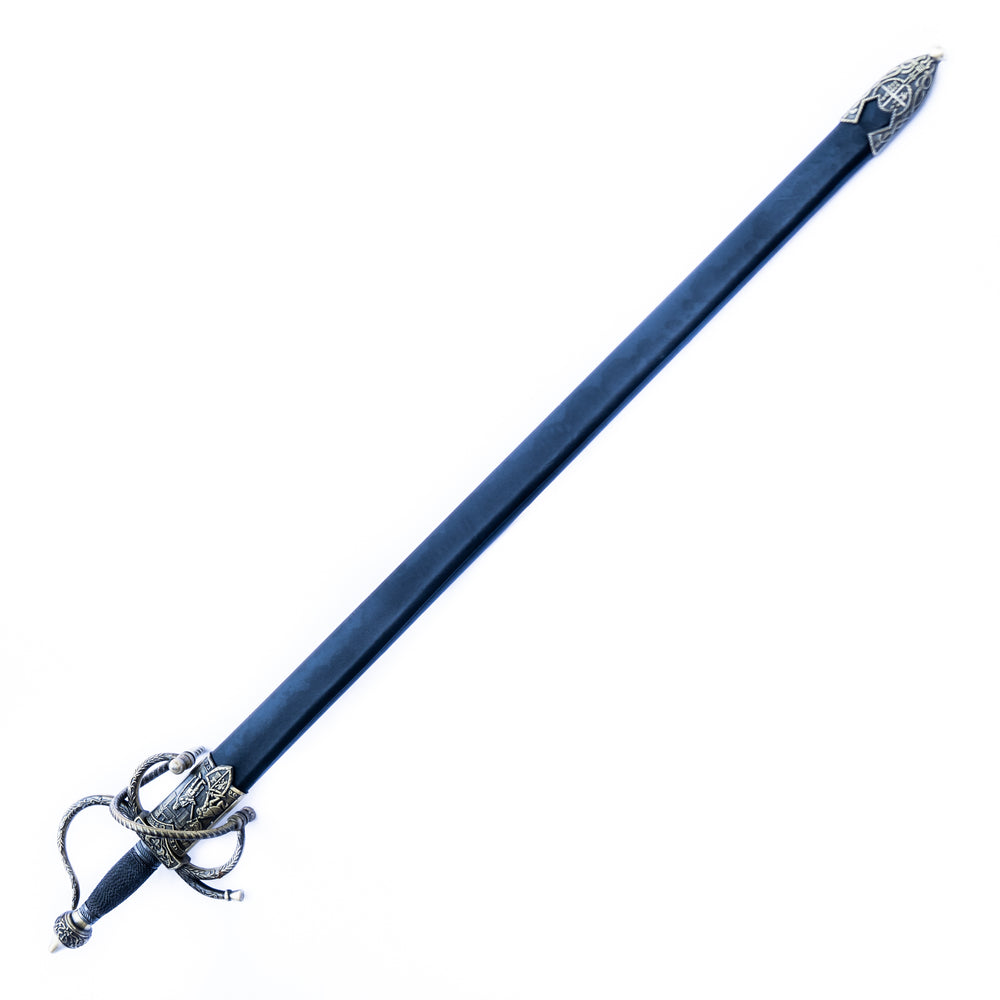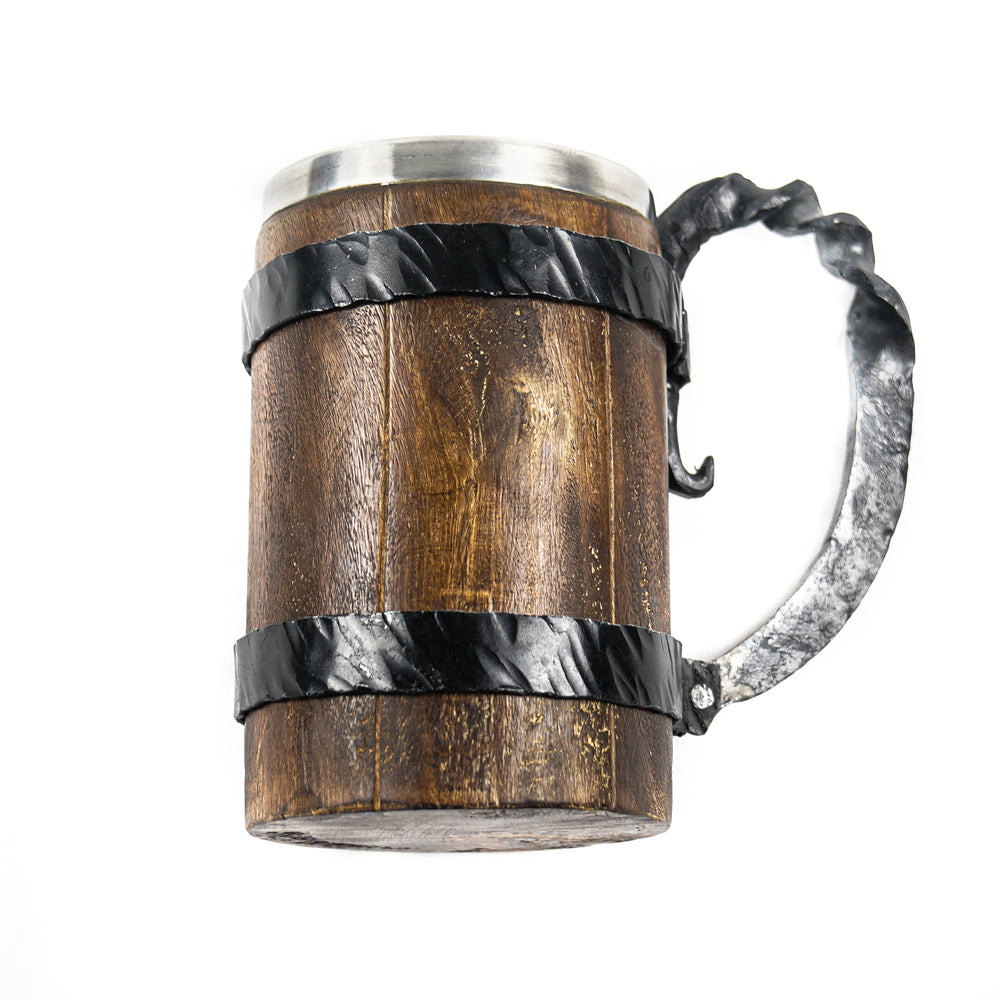Rapier Description
The term "rapier" typically denotes a slender, acutely pointed sword, principally designed for thrusting. While it retains potential for cutting and slashing, the rapier's forte lies in its precision thrusts. One of its distinct features is the intricately designed hilt, which provides comprehensive protection for the hand.
Originating in 15th-century Spain, the rapier didn't truly cement its reputation until it spread across Europe during the 16th and 17th centuries. Often wielded with a single hand, the rapier's design catered to the practice of employing a secondary weapon – be it a dagger, cloak, or later, a pistol – in the opposing hand. This combat style evokes the Roman legionnaires' usage of the gladius, paired with a protective shield.
The rapier became emblematic of both utility and prestige, especially among Europe's elite. However, it was also the subject of criticism. Notable figures like the English martial arts writer, George Silver, voiced concerns over the rapier's functionality and its association with duels.
Over time, the rapier evolved, influencing the modern fencing foil used in contemporary sports. Many fencing schools, established in the 16th century and rooted in rapier techniques, continue to thrive across Europe. The contemporary fencing rapier, which mirrors the design of this particular 47" model, was standardized in 1885.
Sword Details
- Handle Material: Stainless Steel
- Overall Length: 39"
- Rockwell Hardness: 27-35 HRC
- Sheath: Wood and Plastic
- Blade Material: Stainless Steel

